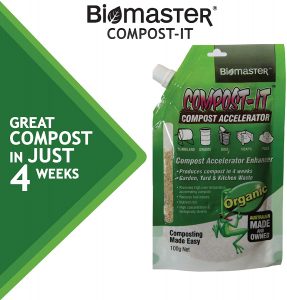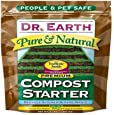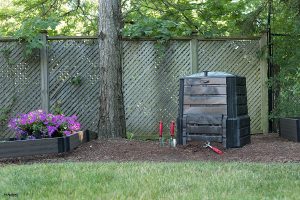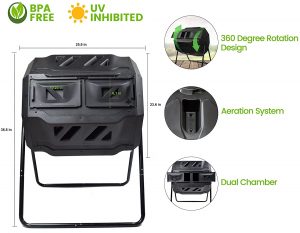Like everything in life, we have to begin at the start. So straight away, we can say that this item is about composting for beginners.
Combining the correct ingredients makes good compost with the proper nutrients and is high in humus.
There are two main components:
Brown Materials
or
Green Materials
Although a few exceptions think of the brown materials as dry, hard, and dead, the green is fresh, wet, or soft.
Let’s take them one by one.
Brown Materials For Composting.
Materials like newspapers, paper towels, tissue, old bills, and products are good for your compost but try to make sure they are shredded. Avoid, if you can, highly colored paper or glossy material.
Leaves
You can return leaves to the soil through your compost, and that’s great because they contain many nutrients and carbon.
These can, therefore, be an excellent part of your compost, and if you can collect a large number of autumn leaves, that would be great. While whole leaves are ok, of course, if you can shred them first, it will stop them from matting together and blocking the airflow.
If you want the ultimate solution to leaf and debris collection, use the Worx WG509 Mulching System. If you are interested, please click the link below:

However, not all leaves are great. It would be better if you left the following leaves out when growing your compost,
Oak Leaves:
Oak Leaves usually take a relatively long time to break down because of their acidity and high tannin levels. If you have or want to use it for plants that like acidic soil, use a separate pile.
Walnut Leaves:
Walnut leaves contain an ingredient that is known to inhibit the growth of some plants. But you can use them if they are thoroughly composted. It would be easier, though. if you never used them at all. Compost for Beginners suggests that some leaves, such as pine, holly, laurel, rhododendron, and rose, take longer to break down, so it would be better to compost these independently
Hay and Straw.
Hay and straw both make a great addition to your compost ingredients, the only difference being that straw provides less nitrogen but more carbon. If you have a heavy clay type of soil, the left-over straw particles in the compost will help to open up the soil structure.
Sawdust and Woodchips.
Sawdust and woodchips have minimal amounts of nitrogen and don’t break down easily in your compost. So use sawdust only in thin layers and try and mix it with things like grass clippings or scraps from the kitchen. If the wood chips are significant, it will be better to use them as mulch as they will take some time to break down. Try to make sure that none of the wood or sawdust has been “pressure treated” or has had chemical preservatives used on it, as it will affect the quality of your compost.
Other Useful Additions Suggested by Compost For Beginners are:
Eggshells:
Eggshells are a helpful addition to your compost pile. It is a good idea, though, to make sure you thoroughly crush them first because the shells can take some time to break down. (Do not add whole eggs, just the shells).
Wood Ash:
Wood ash is an excellent source of potassium and calcium, but it would be better to use them sparingly as they are also very alkaline. Do not use charcoal briquettes as they take a long time to break down. And beware of using ashes from commercially made so-called “fire logs” because they often contain some petroleum derivatives and wax,
Tea:
Very good for your composting, whether in bags or as loose leaves.
List of Brown Materials For Your Compost
- Paper and Cardboard
- Leaves
- Hay and straw
- Egg Shells
- Sawdust
- Tea Bags/Leaves
The above list is not an exhaustive one, there are other items, such as woody pruning, and corn cobs, just to name two.
Green Materials Advised By Compost For Beginners.
Green compost materials have a much larger nitrogen content compared with brown materials. Nitrogen is a vital protein source for the compost microbes resulting in an acceleration of the decomposition process. However, you should use green composting materials sparingly because they are high in nitrogen.; see comments below.
Grass Clippings.
There is a very high nitrogen content in grass clippings. While this is a good thing, there are some things to consider. It is often better to leave grass clippings on the lawn to break down naturally and help feed the soil.
However, if you wish to put them on your compost, do not use them in large layers. Use them sparingly, add a thin layer on some brown materials, or mix them with other green materials.
There is a reason for this. Apply the grass clippings too thickly they can turn into slimy-looking clumps, which will inhibit proper air circulation. They also do not break down easily and can start to smell!!
Manure
A valuable ingredient to add to your compost pile is manure because it contains a high level of nitrogen which, as mentioned above, helps to accelerate the decompression process. However, not all manure is suitable for your garden compost.
Good Manure.
- Chicken
- Horse
- Cow
- Rabbit
- Goat
- Sheep
- Bats
Bad Manure
- Pig
- Cat
- Dog
- Human
The bad manure, either in your compost or in your garden, can contain parasites that can cause disease in people. Do not use any FRESH manure, it should always be composted first.
We may not have access to manure, but do not worry, because alternative ingredients will give your compost a boost. These could be grass clipping mentioned above, seaweed, or vegetable scraps, which we will discuss next.
Vegetable Peelings
Most of us usually have an endless supply of leftover fruit and vegetable peelings.
These would include:
- Potato peelings
- Bit and pieces of uncooked vegetables
- Apple cores
- Banana skins
You can use almost anything that ends up in the garbage bin. It would be better, though, to avoid putting cooked vegetables in your compost because it can slow down decomposition and attract vermin and other unwanted animals.
Seaweed
If you live by the sea or have access to it, you are fortunate because seaweed will give you an abundant nutrient-rich material that will get your compost pile the means to heat up due to its great nitrogen content. I would make sure all the excess salt is removed by washing thoroughly.
Coffee Grounds
Another item that is high in nitrogen is coffee grounds. Just throw your coffee grounds complete with its paper filter onto the compost pile, and it will do its magic.
If you live near a coffee shop, why not ask them to save the used coffee grounds for you?
Remember that coffee grounds can also be put directly into the garden as mulch for any acid-loving plants you may have.
Plant cuttings
You can compost most dead plants and cuttings, even weeds (without seeds), including any harvested plants or flower tops collected from dead-heading.
These are just a few suggestions for items to include in making a good compost pile.
The Environmental Benefits of Composting.
Composting is a great eco-friendly method that breaks down organic materials. Composting is essential because your compost can be added to the soil and will increase its nutrient and quality levels.
However, composting can take a long time, so using a compost starter can speed up the process. Sometimes the starter can transform your waste in as little as four weeks.
Compost starters usually include healthy microbes that speed up the composting process. You can mix it straight into your compost pile or add it to your kitchen counter bin, and it will not only compost your food waste but may reduce its smell.
If you are interested in using this method, please see below two different compost starter kits that Compost For Beginners recommends you buy from Amazon.
Biomaster Compost Accelerator /Starter
This pack creates good garden-ready compost in just four weeks. It’s practical, efficient, easy to use, and suitable for all composting methods. If you want to know more, please click the link below.
Biomaster Compost Accelerator/ Starter

Dr.Earth Compost Starter
The pack contains a superior blend of seaweed extract, beneficial soil microbes, and alfalfa meal, all of which can be used in composting applications because it’s 100% organic and natural and are people and pets-safe. If you want to know more about this product, please click the link below.

There are certain products that you should NOT put on your compost pile or bin.
Weeds with Mature Seeds Attached
Weeds with mature seeds and plants, particularly those with poisonous or dangerous root systems, should not be used on your compost unless you have very hot compost that will kill them.
Human of Pet Feces
Feces carry diseases that can infect humans: therefore, you should not add them to your compost.
Compost For Beginners has already mentioned that pressure-treated wood ( usually recognized by its green color) or any chemically treated wood products can be dangerous. It can leach arsenic into the soil, so do not add any to your compost.
Other items you should avoid are listed below. Most of them you probably would not put on your compost anyway.
Items to be Avoided
- Plastic
- Metal
- Glass
- Meat and Bones
- Whole Eggs
- Dairy Products
- Fatty Food Waste
- Fish or Poultry
We hope the above has given you some ideas for making your compost pile. Composting For Beginners wishes you every success in producing great compost, rich in nutrients and high humus.
Examples of Compost Bins to Consider by Compost with Beginners.
Before we finish, we know some people prefer a more controlled compost pile, i.e., by using a compost bin, so Composting For Beginners lists below three choices, please view them if you feel they would be helpful.
Algreen Classic Compost Bin
This compost bin has many positive points:-
- You can quickly assemble it. No professional help is required.
- Inexpensive, it is for people who are on a strict budget but still want to recycle their kitchen waste effectively.
- Long-lasting. It can withstand most types of weather because of its robust design.
- The compost bin is fully protected and insulated, thereby keeping animals out.
- Openings provide a good air supply.
If you would like further information, please click the link below.

FCMP Outdoor IM400 Tumbling Composter
Due to its design and weight, this composter allows the compost to mix very fast, so it will not use much of your time decomposing your household rubbish.
While it is relatively large for just household composting, it will provide compost within two weeks. It is efficient, durable, and easy to use, and if you would like to investigate further, please click the link below.
FCMP Outdoor IM400 Tumbling Composter

EJWOX Garden Compost Bin Tumbler
Easy to assemble if you use an electric screwdriver!! The tumbler has been designed to withstand 60 mph winds. The EJWOX is an excellent composter that spins quickly and can handle a surprising amount of waste. It is affordable and will do a great job of recycling your waste from the kitchen or yard. If used correctly, the tumbler will quickly enrich your soil. If you would like to know more, please click the link below.
EJWOX Garden Compost Bin Tumbler

To give you a great start Composting For Beginners is enclosing three videos that we hope you will find informative.
The Perfect Compost Recipe
A No-nonsense Approach To Making Great Compost
Composting For Beginners thank you for reading.